Popular herbs in the average kitchen, do you know all of the differences between parsley vs cilantro? What are these plants typically used for, and how can you learn how to tell these herbs apart upon first glance? If you are wondering how parsley and cilantro relate to one another, you’re in the right place.
In this article, we will compare and contrast parsley with cilantro so that you can fully understand how they are similar and different. We will go over their physical appearances as well as how both of these plants prefer to grow. Finally, we will go over the way that parsley and cilantro taste so that you can use them in your own kitchen. Let’s get started!
Comparing Parsley vs Cilantro
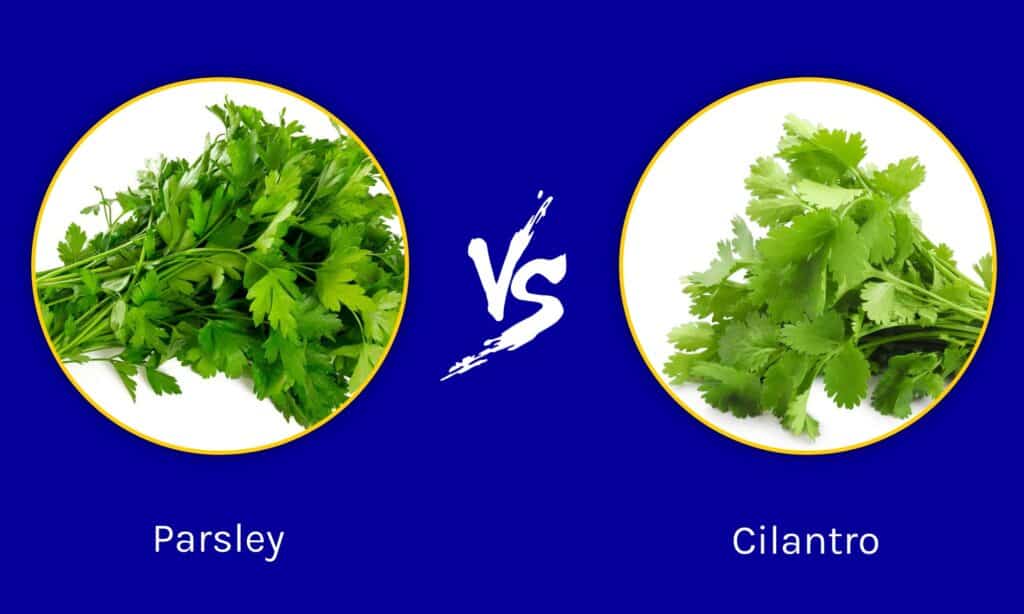
| Parsley | Cilantro | |
|---|---|---|
| Scientific Classification | Petroselinum crispum | Coriandrum sativum |
| Description | Vivid green leaves typically found in a ruffled texture. Some varieties have three distinct leaves, while others are less obvious. Reaches up to a foot in height and just as wide, with multiple leaves per stem | Deep green leaves, typically three-pronged, with scalloped edges. Multiple leaves grow on a single stem, and the plant reaches up to two feet in height and one foot wide on average |
| Uses | Used around the world in a variety of cuisines. Frequently used as a garnish, but is a key component in many Mediterranean dishes | Used around the world in a variety of cuisines. Best used as a garnish or in cold dishes, as cilantro leaves lose their potency in heat |
| Origin and Growing Preferences | Native to the Mediterranean; prefers to grow in full sun, well-draining soil, and sowing from seed is easy | Native to Africa, Europe, and Asia; prefers full sun and consistently moist soil, though the growing season for this plant is very short |
| Flavor and Taste | Clean, herby taste and flavor that is lemony and peppery; blends well with a variety of dishes | Tastes similarly to parsley, but has a more citrus tang. Some people say cilantro tastes soapy, but this is due to a particular gene |
Key Differences Between Parsley vs Cilantro
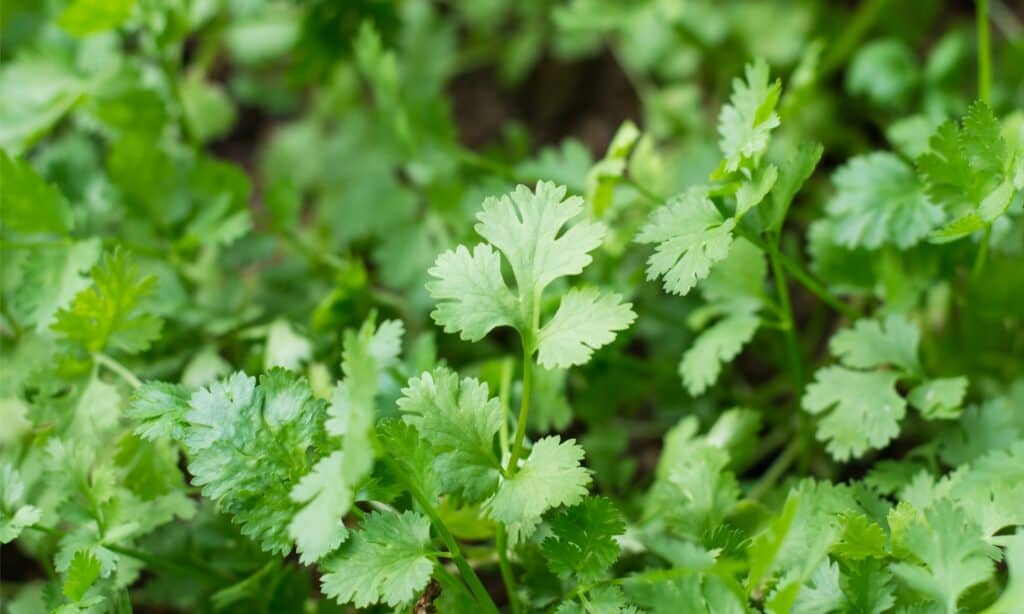
Parsley plants grow smaller than the average cilantro plant.
©iStock.com/Tevarak
There are a number of differences between parsley and cilantro. For example, some parsley varieties are more ruffled in texture compared to the gently scalloped leaves of cilantro. Parsley plants grow smaller than the average cilantro plant. The taste of cilantro is more citrusy compared to the clean taste of parsley. Finally, parsley is used in more cuisines on average compared to the more specialized cilantro herb.
Let’s take a closer look at all of these differences in more detail now.
Parsley vs Cilantro: Classification
While parsley and cilantro are from the same plant family known as Apiaceae, they belong to different genuses and are distinct species from one another. Parsley is classified as Petroselinum crispum, while cilantro is classified as Coriandrum sativum. Interestingly, cilantro is also known as coriander, as the leaves of the coriander plant are identical to the cilantro herb that we know and love.
Parsley vs Cilantro: Description
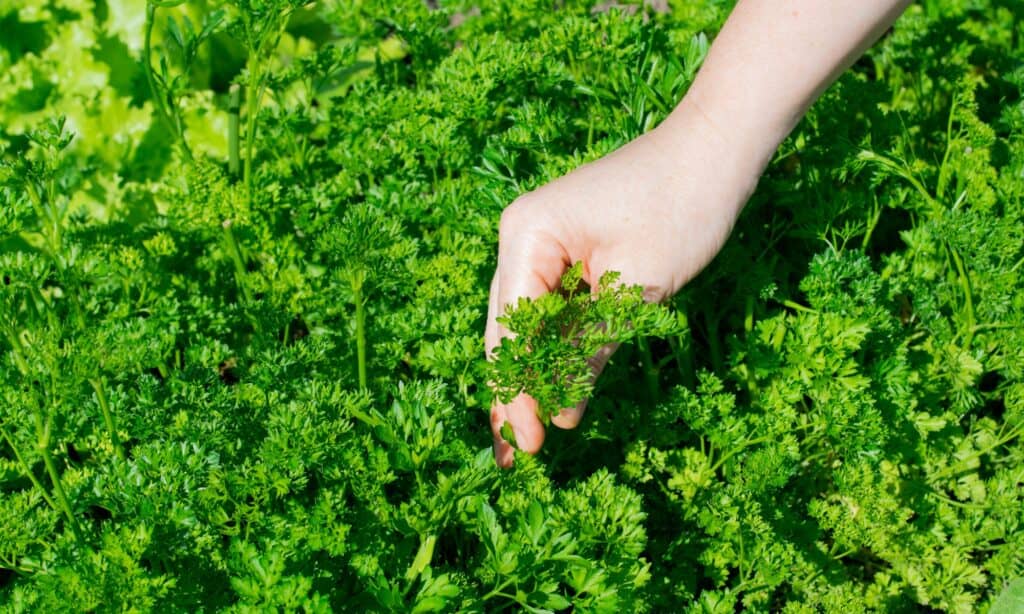
Depending on the varieties you are comparing, most parsley leaves are more ruffled compared to the average cilantro leaf.
©iStock.com/Oksana Chaun
It can take some practice to tell parsley apart from cilantro. Both of these herbs grow in a vivid green color, though parsley is typically lighter in shade compared to cilantro. Depending on the varieties you are comparing, most parsley leaves are more ruffled compared to the average cilantro leaf. However, flat leaf parsley can look extremely similar to cilantro.
Parsley and cilantro both grow with 3 distinctly separate leaves, though this separation is easier to see on cilantro rather than parsley. In addition, cilantro plants grow taller and wider compared to the average parsley plant. However, the easiest way to tell the difference between these two herbs is to smell and taste them!
Parsley vs Cilantro: Uses
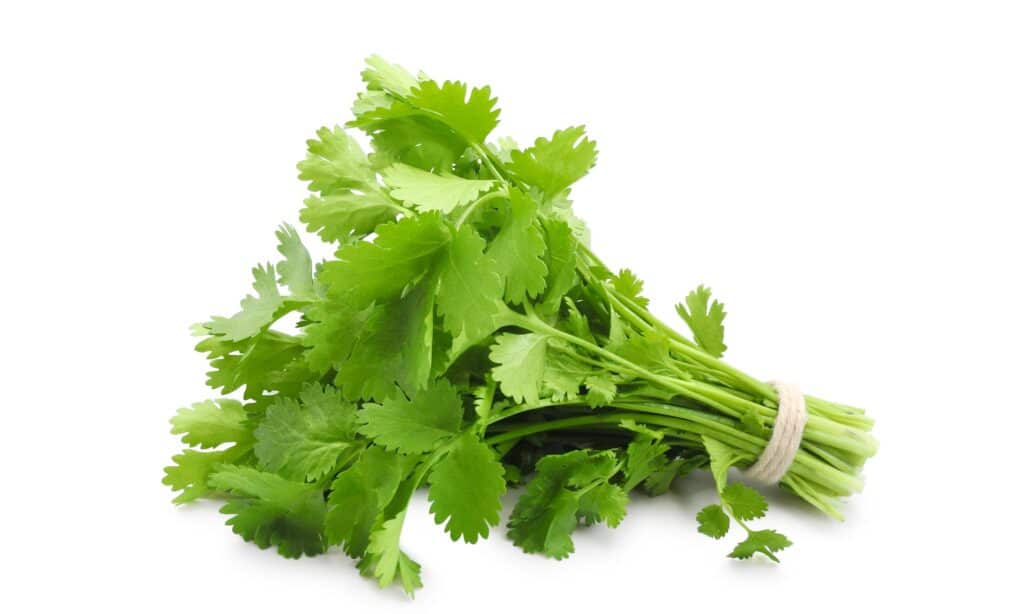
Parsley is used in a number of different types of cuisines, and it is likely used more on average than cilantro.
©iStock.com/Yana Boiko
In case you didn’t already know, parsley and cilantro have a variety of culinary uses. They are also used medicinally for a variety of things, though you should always use caution with any type of natural remedy. Parsley is used in a number of different types of cuisines, and it is likely used more on average than cilantro. In addition, cilantro loses its flavor when exposed to heat, making it ideal for raw or cool dishes, while parsley is also ideally used as a garnish.
Parsley vs Cilantro: Origin and How to Grow
Parsley and cilantro have different origins, though they are both cultivated widely around the world. However, parsley originated in the Mediterranean, while cilantro has origins in Europe, Asia, and Africa. Similarly to a variety of other herbs, parsley and cilantro have the same growing preferences. They both enjoy full sunlight and well-draining soil, though the average cilantro plant is less hardy compared to the average parsley plant.
Parsley vs Cilantro: Flavor and Taste
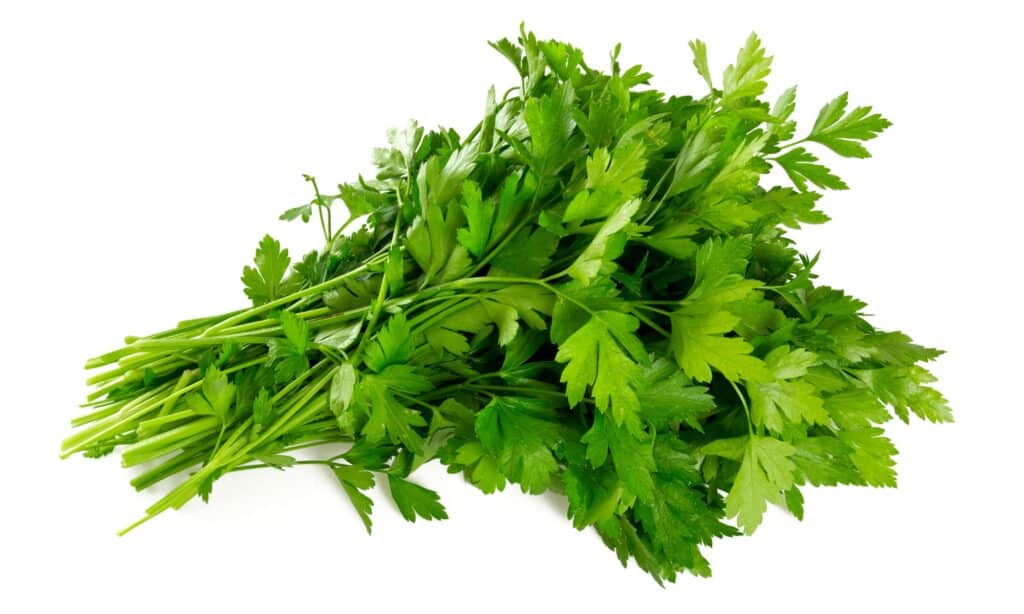
Parsley has a clean and herbaceous flavor with lemon and pepper notes, while cilantro is more citrusy overall.
©iStock.com/Diana Taliun
Depending on who you ask, the flavor and taste of parsley and cilantro differs. For the most part, parsley has a clean and herbaceous flavor with lemon and pepper notes, while cilantro is more citrusy overall. However, a particular gene found in certain individuals makes cilantro taste soapy, something that doesn’t happen with parsley. Many people would argue that cilantro is the most divisive herb out there, while parsley’s mild flavor makes it more of a crowd-pleaser overall!
The photo featured at the top of this post is © iStock.com/Tevarak
Thank you for reading! Have some feedback for us? Contact the AZ Animals editorial team.






